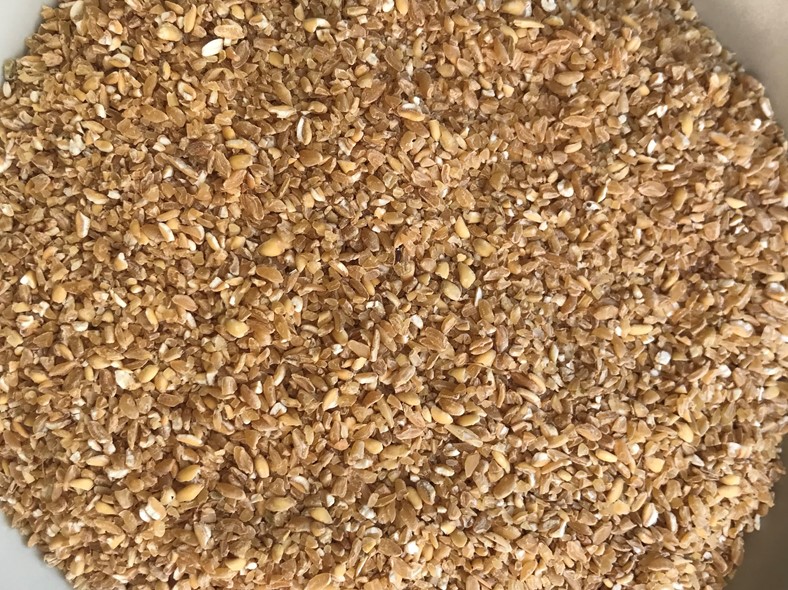ENTER A PRODUCT: Submission #47
Secondary tabs
Submission information
Submission Number: 47
Submission ID: 53
Submission UUID: 04adbe23-74d3-49e5-bd23-2a22d5033cd3
Submission URI: /slowfood/form/segnala-un-prodotto-bk1
Created: Wed, 03/22/2023 - 14:20
Completed: Wed, 03/22/2023 - 14:22
Changed: Thu, 07/20/2023 - 10:05
Remote IP address: (unknown)
Submitted by: admin-form
Language: English
Is draft: No
Current page: Complete
Webform: ENTER A PRODUCT
General Info
Jareesheh
| Category |
|---|
| Cereali e farine |
Geographic area: Giordania
Latitude: 30.585164
Longitude: 36.238414
Location: 30.585164,36.238414
Formatted Address: Giordania
Country: Giordania
Country Code: JO
Latitude: 30.585164
Longitude: 36.238414
Location: 30.585164,36.238414
Formatted Address: Giordania
Country: Giordania
Country Code: JO
Product description
Jareesheh is a product obtained by milling hulled durum wheat grains, which in the past were also made from barley. It represents the main traditional food of Jordan and is the previous step in the production process of Bulgur.
The product does not require elaborate processing and is obtained by grinding the durum wheat grains, previously cleaned and hulled, into coarse particles and further ground. This process preserves the nutrients and the fibre-rich bran and germ layers. Typically, the grain sizes obtained are fine, medium or large.
The product does not require elaborate processing and is obtained by grinding the durum wheat grains, previously cleaned and hulled, into coarse particles and further ground. This process preserves the nutrients and the fibre-rich bran and germ layers. Typically, the grain sizes obtained are fine, medium or large.
Jareesh is a key ingredient in the preparation of the local Samneh Baladiah ghee to remove sediment. From this process, called Tagsheed, comes Geshdeh, a by-product made from Jareesheh cooked in butter with Hwajeh (a traditional mixture of herbs and wild plants that characterises the taste and colour of local ghee) which is an excellent source of energy and can be stored and consumed hot or cold.
After harvesting, the wheat crops are left in the field for a few days to dry before processing. Subsequently, the grains are removed from the plant following three different operations: the separation of the grain from the cob, the straw and the chaff. The separation of the grain from the cob is the simplest traditional method and involves the use of a stick or hinged flail to strike the crop scattered on the ground. Separating the grain from the straw or chaff, on the other hand, is done by lifting and tossing the threshed material so that the heaviness of the grains causes them to fall vertically, while the lighter chaff and straw are blown away. Alternatively, women used a hand sieve, similar to a basket, to shake the grains and separate them from the residue.
Finally, the grains are dried and stored in bags pending processing.
Traditionally, the grain was ground by hand using a stone mill (Hajar Al-Rahaa) or a millstone (Jarousheh), an instrument similar to the stone mill but consisting of a circular disc formed by two slightly separated stones that are not completely aligned. The millstone and the mill also differ in the type of surface of the stones with which they are made, coarse for the former and smooth for the latter. Women could also use a tool called a hawen, a mortar for pounding and crushing grain.
Finally, the grains are dried and stored in bags pending processing.
Traditionally, the grain was ground by hand using a stone mill (Hajar Al-Rahaa) or a millstone (Jarousheh), an instrument similar to the stone mill but consisting of a circular disc formed by two slightly separated stones that are not completely aligned. The millstone and the mill also differ in the type of surface of the stones with which they are made, coarse for the former and smooth for the latter. Women could also use a tool called a hawen, a mortar for pounding and crushing grain.
There are no specific historical documents on the origins of Jareesheh, although it is mentioned in Arabic heritage books and in Agriculture research in the Levant during the Umayyad period (AD 661-750) as a well-known product in the region. According to locals, Jareesheh was processed by their grandparents and previous generations and stored for consumption throughout the year.
declining, mainly due to the progressive substitution with rice. Most inhabitants cultivate or buy the grain in small quantities for home consumption as the younger generation does not particularly appreciate its taste.
NO
Upload space
- Image:
